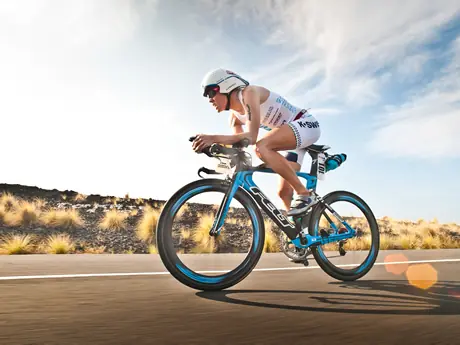
Mirinda Carfrae is not your typical triathlete. She was introduced to the sport at 18, started racing elite at the junior level, and admits she had absolutely no idea what she was doing.
"I was thrown in the deep end," she said. "There were a lot of races where I was handily beaten?I probably should not have been racing pro."

She wasn't just losing though; she was losing to some of the world's best triathletes?people like Barb Lindquist. It was sink or swim for Carfrae, and now, with an Ironman World Championship win in 2010, two second place finishes and 15 Ironman 70.3 wins under her belt, it's evident she swam.
More: 4 Keys to Ironman Execution
"When you put yourself in among the best in the world," she said, "you learn pretty quickly."
"Quickly" however, is relative, and learning quickly involved a lot of long hours and hard work. Here, she talks about what it took to not only survive, but to rise to the top—and stay there.
Progression
Whether you're thrown in with the sharks, or trying to progress from age-grouper to pro, the key to success, Carfrae says, is persistence.
"It doesn't happen overnight," she said. "But if you want it bad enough, you can make it happen."
Although she had a strong run, Carfrae had a lot of work to do on the swim and bike. "I was hopeless in the swim." she laughed.
So, like any committed triathlete, she started with the basics and focused on technique. Thirteen years later she still tries to get in the pool almost every day.
"If you're a great swimmer, you probably don't have to be in the pool six times a week," she said. "For me, it's important?to get that feel for the water."
More: 4 Steps to a Smooth Swim
Current Training
Early on, she thought 15- to 18-hour training weeks were a lot. Now she puts in closer to 35 hours during peak season. In addition to six sessions in the pool, she rides five days a week for a total of about 370 miles, or 20 hours of cycling. She also runs six days a week, with one of those days including a double—one run in the morning and one in the afternoon.
With all those hours, she says "it's important to keep your eye on the end goal but to have small goals along the way."
It's those goals that keep her going during long sessions.
- 1
- of
- 2
About the Author









Discuss This Article